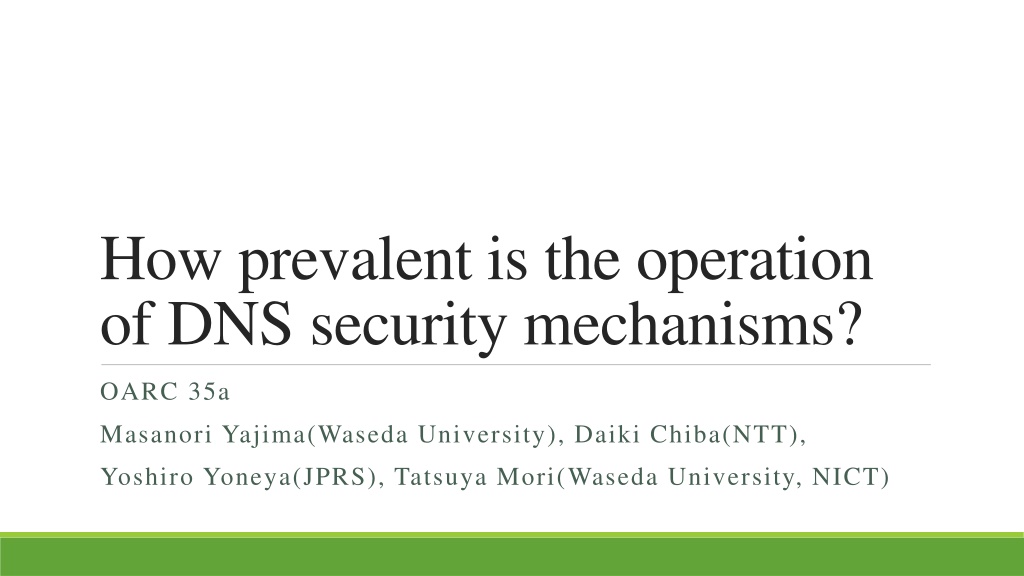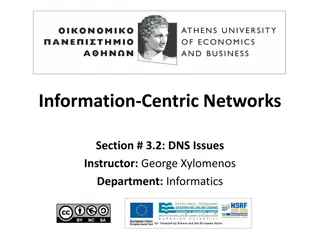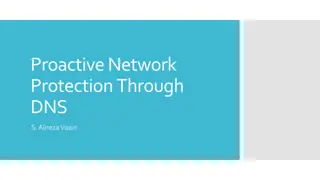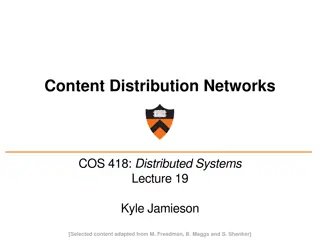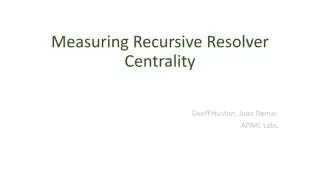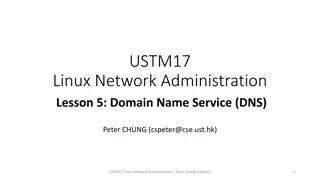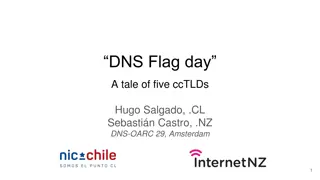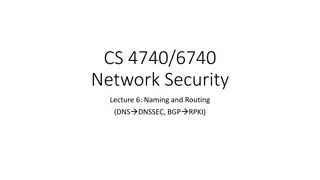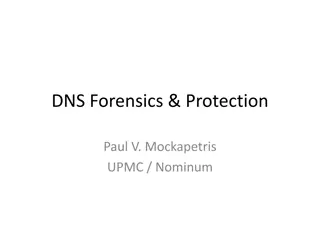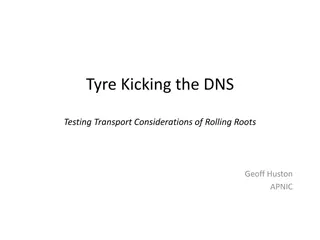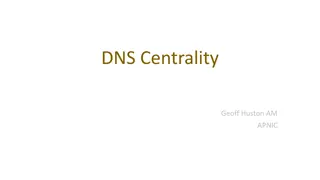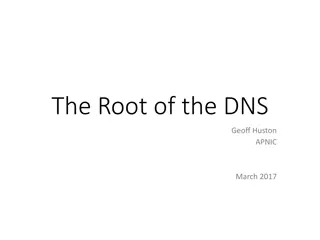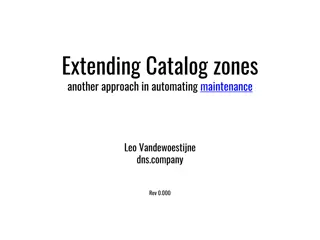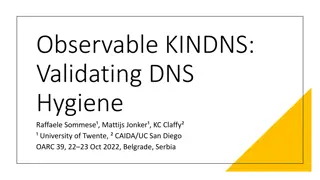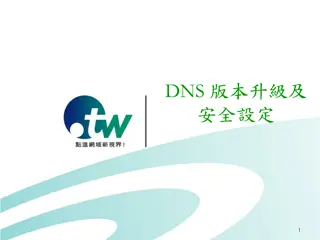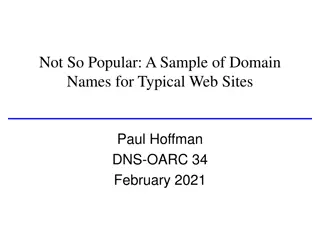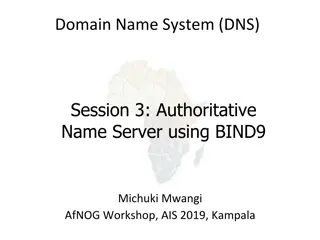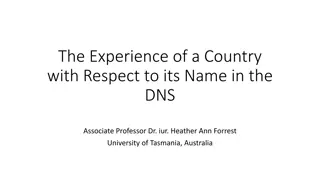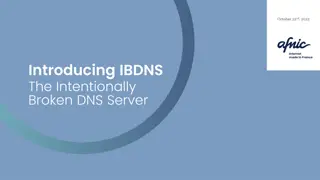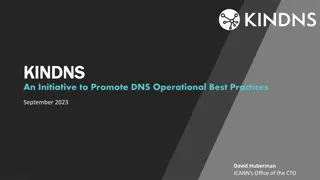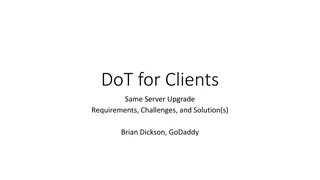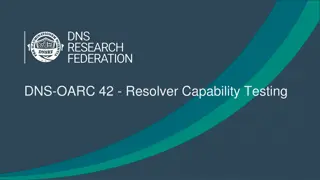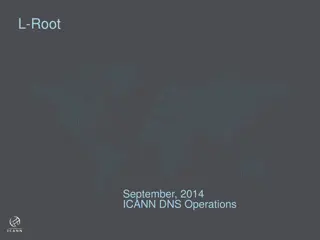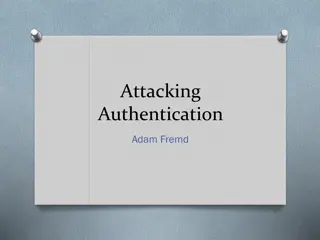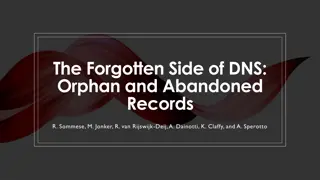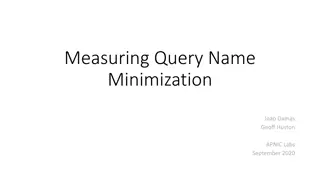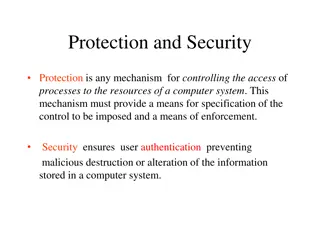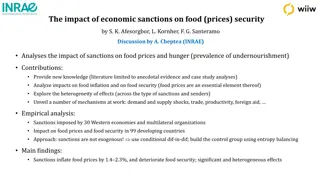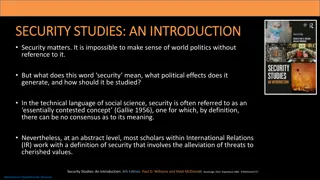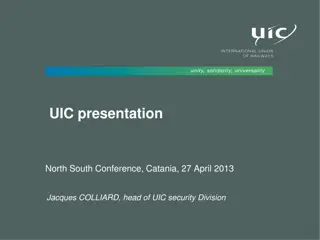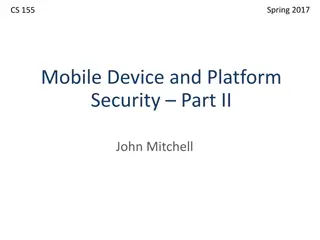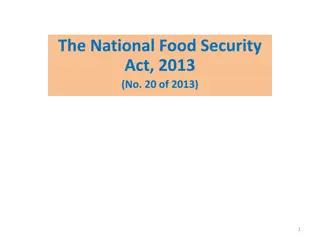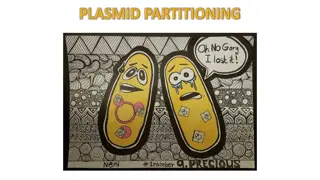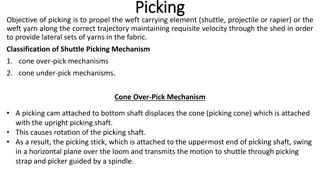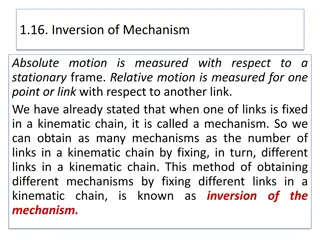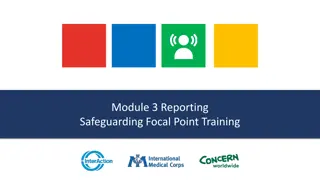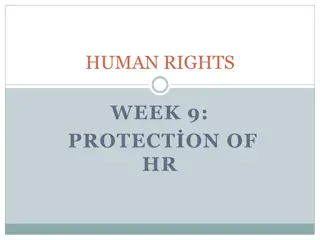Understanding DNS Security Mechanisms
Various DNS security mechanisms like DNSSEC, DNS Cookies, CAA, SPF, DMARC, and more are crucial in protecting against security threats targeting the DNS ecosystem. This analysis delves into the prevalence and effectiveness of these mechanisms in countering vulnerabilities such as cache poisoning, amplification attacks, phishing, and privacy leakage. Learn how these tools safeguard the integrity and confidentiality of DNS communications.
Download Presentation

Please find below an Image/Link to download the presentation.
The content on the website is provided AS IS for your information and personal use only. It may not be sold, licensed, or shared on other websites without obtaining consent from the author. Download presentation by click this link. If you encounter any issues during the download, it is possible that the publisher has removed the file from their server.
E N D
Presentation Transcript
How prevalent is the operation of DNS security mechanisms? OARC 35a Masanori Yajima(Waseda University), Daiki Chiba(NTT), Yoshiro Yoneya(JPRS), Tatsuya Mori(Waseda University, NICT)
Introduction Various DNS security mechanisms have been proposed, standardized, and implemented It is not clear how widespread these mechanisms are in the DNS ecosystem We conduct a large-scale measurement analysis of the major DNS security mechanisms DNSSEC, DNS Cookies, CAA, SPF, DMARC, MTA-STS, DANE, and TLS-RPT We share the results of the measurement and want to get feedback 2021/9/8 OARC35-a 2
DNS security mechanisms Security threats targeting DNS can be broadly classified into the following three categories: vulnerabilities of DNS communication (DNS cache poisoning attacks, DNS amplification attacks) domain names (phishing sites and phishing emails, using spoofed domain names) leakage of privacy information contained in the DNS queries/responses 2021/9/8 OARC35-a 3
DNS security mechanisms Vulnerabilities of DNS communication (DNS cache poisoning attacks, DNS amplification attacks) DNSSEC, DNS Cookie Authoritative Servers and Full Resolvers Authoritative Server Attacker Full Resolver Attacker Victim Server 2021/9/8 OARC35-a 4
DNS security mechanisms Domain names (phishing sites and phishing emails, using spoofed domain names) CAA, SPF, DMARC, MTA-STS, DANE, TLSRPT User User Attacker Phishing site 2021/9/8 OARC35-a 5
DNS security mechanisms Leakage of privacy information contained in the DNS queries/responses DNS over TLS(DoT), DNS over HTTPS(DoH), Attacker User Full Resolver Authoritative Server 2021/9/8 OARC35-a 6
DNSSEC DNSSEC is a mechanism used to assure the integrity of DNS responses By adding a digital signature to a DNS query response, it is possible to verify that the response has not been tampered with digital signature ressponse 2021/9/8 OARC35-a 7
DNSSEC DNSSEC only guarantees the integrity of the response It cannot deal with the case in which the other party to the communication has been stealthily switched To support DNSSEC, zone owners have to positively configure 2021/9/8 OARC35-a 8
DNS Cookies DNS Cookies allows both DNS clients and servers to verify that the communicating entities have not been switched The client and server will each validate the DNS Cookies Where is example.com ? Client Cookie: 1234567890abcdef Server Cookie:<missing> example.com is at 111.222.212.121 Client Cookie: 1234567890abcdef Server Cookie:9283048214b89faddd 2021/9/8 OARC35-a 9
DNS Cookies If the verification fails, the server responds with a BADCOOKIE error and either applies a rate limit or discards the packet Difficulty of supporting DNS Cookies depends on DNS software implementation and default setting 2021/9/8 OARC35-a 10
CAA DNS certification authority authorization (CAA) prevents third parties from issuing TLS server certificates without permission The administrator of a domain name can specify the certification authority (CA) that is allowed to issue TLS certificates for the registered domain name Example of CAA RR 2021/9/8 OARC35-a 11
CAA CAA RR is required when issuing of TLS server certificates CAA RR enable Client to distinguish whether communication with the target domain name can be encrypted or not CAA should be used with DNSSEC 2021/9/8 OARC35-a 12
Mail security mechanisms There are many security mechanisms which enhance the security functionalities for e-mail communication SPF, DMARC, MTA-STS, DANE, and TLSRPT These mechanisms mitigate threats posed by phishing e-mails 2021/9/8 OARC35-a 13
Mail security mechanisms DNSSEC signing is strongly recommended for DMARC and DANE Mail security mechanisms are indicators of some functions: Mechanisms SPF, DMARC MTA-STS, TLSRPT Indicator of sender authentication is enabled for emails implementing instructions for encryption of email delivery and reporting on its downgrade. distribute securely the server certificate public key used for communications other than HTTPS DANE(TLSA) 2021/9/8 OARC35-a 14
DNS security mechanisms DNS Security Mechanisms need to configure DNS Records: Table: DNS records used for configuring DNS security mechanisms. Configure Target domain name RR Signature DNSSEC Server <domain name> RRSIG(, etc) n/a DNS Cookies Server n/a n/a n/a CAA Server <domain name> CAA n/a SPF Server <domain name> TXT v=spf1 DMARC Receiver _dmarc.<domain name> TXT v=DMARC1 MTA-STS Receiver _mta-sts.<domain name> TXT v=STSv1 DANE Receiver _25._tcp.<domain name> TLSA n/a TLSRPT Receiver _smtp._tls.<domain name> TXT v=TLSRPTv1 2021/9/8 OARC35-a 15
Method The IP addresses corresponding to each domain name are examined If we observe that at least one IP address operates the mechanism, then we determine that the entire domain name is compliant with the security mechanism User Authoritative Server Full Resolver 2021/9/8 OARC35-a 16
Data set Root: 1 domain, 13 IP TLDs (the legacy) gTLD : 22 domains, 110 IP ccTLD: 254 domains, 993 IP Popular domains(from Tranco List): 9999 domains, 12,318 IP We focus on IPv4 addresses 2021/9/8 OARC35-a 17
Result Core DNS infrastructures Security mechanisms used to counter threats to DNS communication have a high adoption rate in servers involved in the core of the DNS DNS Servers DNSSEC[%] DNS Cookies[%] [%] ROOT 100.00 100.00 0.00 ccTLD 56.69 81.10 0.00 gTLD 100.00 45.45 0.00 Top 10 0.00 20.00 30.00 90.00 Top 100 4.00 21.00 48.00 86.00 Top 1K 9.20 13.80 22.70 88.10 Top 5K 8.60 18.58 14.90 87.76 Top 10K 7.67 17.40 12.98 86.75 CAA MX[%] SPF[%] DMARC[%] MTA- STS[%] 0.00 0.00 0.00 33.33 5.81 1.48 0.75 0.51 DANE [%] 0.00 0.00 0.00 0.00 0.00 0.57 0.84 0.84 TLSRPT [%] 0.00 0.00 0.00 33.33 5.81 1.82 0.98 0.74 0.00 6.30 0.00 0.00 0.00 0.00 0.00 0.00 0.00 88.89 84.88 74.01 58.49 54.09 100.00 96.51 92.85 89.86 88.66 2021/9/8 OARC35-a 18
Result Popular domains The rate for domain names used on the web remains low at 4- 20% DNS Servers DNSSEC[%] DNS CAA [%] 0.00 0.00 0.00 30.00 48.00 22.70 14.90 12.98 MX[%] SPF[%] DMARC[%] MTA- STS[%] 0.00 0.00 0.00 33.33 5.81 1.48 0.75 0.51 DANE [%] 0.00 0.00 0.00 0.00 0.00 0.57 0.84 0.84 TLSRPT Cookies[%] 100.00 [%] 0.00 0.00 0.00 33.33 5.81 1.82 0.98 0.74 ROOT ccTLD gTLD Top 10 Top 100 Top 1K Top 5K Top 10K 100.00 56.69 100.00 0.00 4.00 9.20 8.60 7.67 0.00 6.30 0.00 90.00 86.00 88.10 87.76 86.75 0.00 0.00 0.00 0.00 0.00 0.00 88.89 84.88 74.01 58.49 54.09 81.10 45.45 20.00 21.00 13.80 18.58 17.40 100.00 96.51 92.85 89.86 88.66 2021/9/8 OARC35-a 19
Result Mail security mechanisms(1) SPF and DMARC have a higher adoption rate than other security mechanisms DNS Servers DNSSEC[%] DNS CAA [%] 0.00 0.00 0.00 30.00 48.00 22.70 14.90 12.98 MX[%] SPF[%] DMARC[%] MTA- STS[%] 0.00 0.00 0.00 33.33 5.81 1.48 0.75 0.51 DANE [%] 0.00 0.00 0.00 0.00 0.00 0.57 0.84 0.84 TLSRPT Cookies[%] 100.00 [%] 0.00 0.00 0.00 33.33 5.81 1.82 0.98 0.74 ROOT ccTLD gTLD Top 10 Top 100 Top 1K Top 5K Top 10K 100.00 56.69 100.00 0.00 4.00 9.20 8.60 7.67 0.00 6.30 0.00 90.00 86.00 88.10 87.76 86.75 0.00 0.00 0.00 0.00 0.00 0.00 88.89 84.88 74.01 58.49 54.09 81.10 45.45 20.00 21.00 13.80 18.58 17.40 100.00 96.51 92.85 89.86 88.66 2021/9/8 OARC35-a 20
Result Mail security mechanisms(2) The adoption rate of DANE is less than 1%, regardless of its popularity DNS Servers DNSSEC[%] DNS CAA [%] 0.00 0.00 0.00 30.00 48.00 22.70 14.90 12.98 MX[%] SPF[%] DMARC[%] MTA- STS[%] 0.00 0.00 0.00 33.33 5.81 1.48 0.75 0.51 DANE [%] 0.00 0.00 0.00 0.00 0.00 0.57 0.84 0.84 TLSRPT Cookies[%] 100.00 [%] 0.00 0.00 0.00 33.33 5.81 1.82 0.98 0.74 ROOT ccTLD gTLD Top 10 Top 100 Top 1K Top 5K Top 10K 100.00 56.69 100.00 0.00 4.00 9.20 8.60 7.67 0.00 6.30 0.00 90.00 86.00 88.10 87.76 86.75 0.00 0.00 0.00 0.00 0.00 0.00 88.89 84.88 74.01 58.49 54.09 81.10 45.45 20.00 21.00 13.80 18.58 17.40 100.00 96.51 92.85 89.86 88.66 2021/9/8 OARC35-a 21
Result Co-occurence The co-occurrence scores of SPF and DMARC, DNS Cookies and SPF, and CAA and SPF are high 2021/9/8 OARC35-a 22
Result Adoption rates against difficulty We study the relationship between setup difficulty and adoption rate for each security mechanism The evaluation indicators were set as the table: No. 1 2 3 4 5 Description DNS resource records need to be configured. DNS server configuration needs to be changed. Mail server configuration needs to be changed. Web server configuration needs to be changed. A third-party intermediary is required. Point 1 2 2 2 3 2021/9/8 OARC35-a 23
Result Adoption rates against difficulty As a result, the setting difficulty is as the table: Indicators No. 1 2 1 2 1 1 1 1 1 2 1 2 Mechanisms Difficulty Level 3 4 5 SPF DNS Cookies DMARC CAA MTA-STS TLSRPT DNSSEC DANE 1 2 3 3 5 5 6 6 2 2 2 2 2 2 3 3 2021/9/8 OARC35-a 24
Result Adoption rates against difficulty The lower the difficulty level is, the higher the adoption rate Even when the difficulty level is high, mechanisms proposed relatively earlier have a higher adoption rate than newer mechanisms 2021/9/8 OARC35-a 25
Discussion The security level of a DNS can be significantly improved by properly configuring the security mechanisms analyzed in this study Domain name administrators should review the configuration of these mechanisms on a regular basis The key to increasing the adoption rate of security mechanisms lies in their ease of setup. 2021/9/8 OARC35-a 26
Future work Conduct a human study on domain name administrators approaches such as surveys, interviews, or focus groups Study of new DNS security mechanisms to be standardized in the future Investigate whether the security mechanisms that operate in DNS clients and full resolvers are correctly configured and operated 2021/9/8 OARC35-a 27
Conclusion We conducted a large-scale measurement study on the adoption rates of major DNS security mechanisms DNSSEC, DNS Cookies, CAA, SPF, DMARC, MTA-STS, DANE, and TLSRPT Core DNS infrastructures such as root servers and TLD servers had high adoption rates of DNSSEC and DNS Cookies Mechanisms that were easier to configure tended to have higher adoption rates 2021/9/8 OARC35-a 28
Questions? Comments? Masanori Yajima y-masa22@nsl.cs.waseda.ac.jp 2021/9/8 OARC35-a 29
